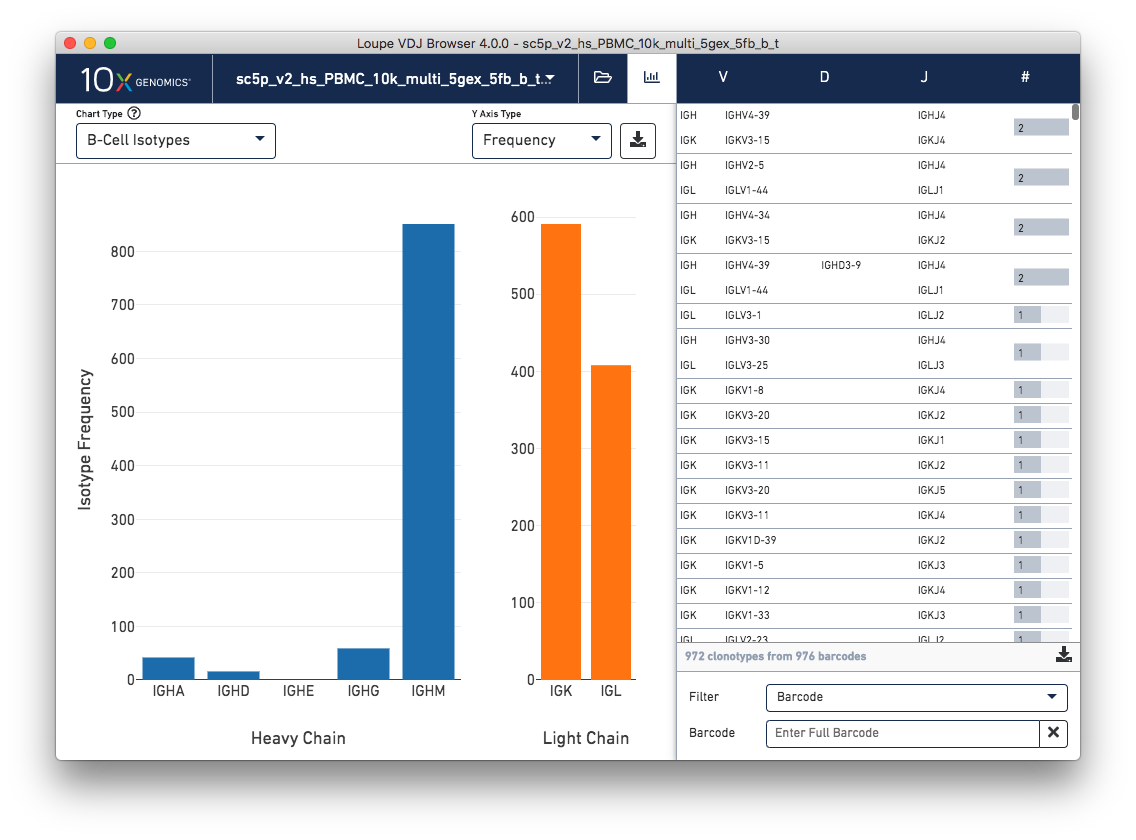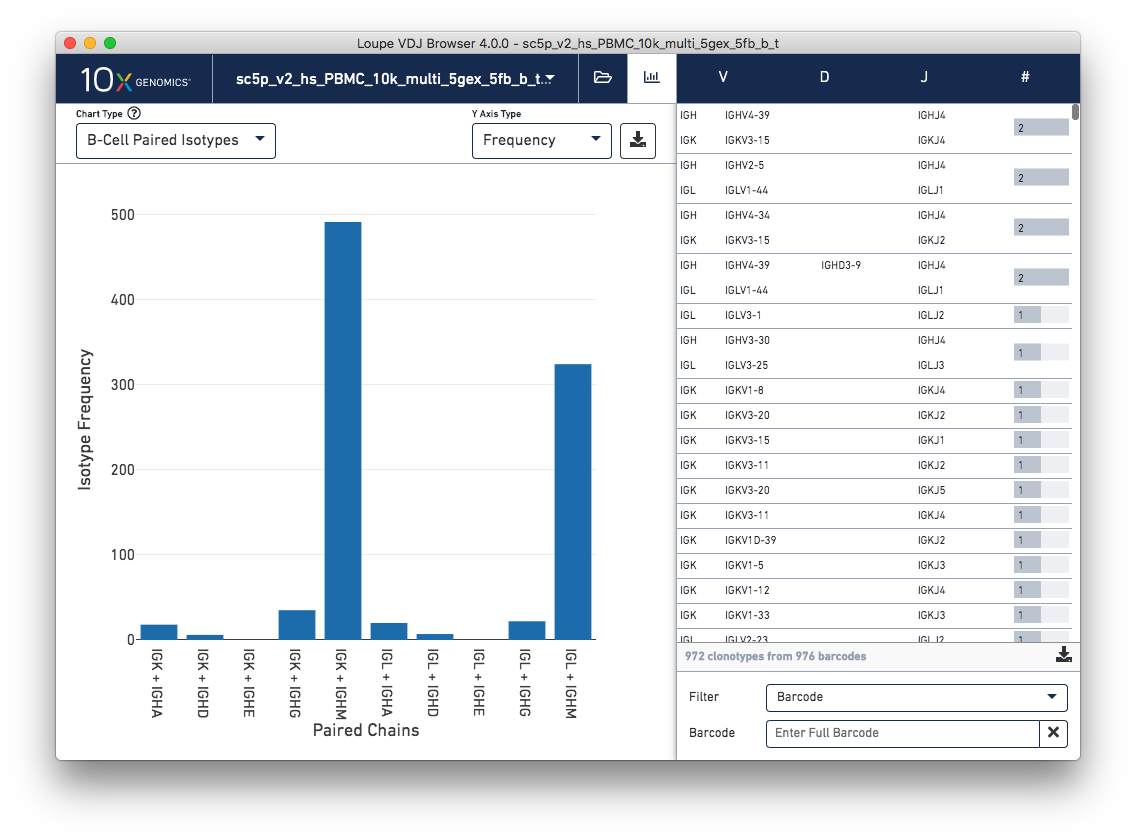Cell Ranger4.0, printed on 03/11/2025
All the same visualizations and tools that we used to look at the T cell receptor repertoire are still available, minus the iNKT/MAIT Evidence filter, with updates to accommodate analysis of B cell immunoglobulin data. For instance, we identify IGH, IGK, and IGL immunoglobin chains.
We've provided several example B cell Ig datasets for you to download and explore. For this example, we'll use a PBMC B cell Ig dataset from the same donor as the built in Loupe V(D)J Browser tutorial dataset.
Immunoglobulin class switch recombination, or isotype switching, occurs when the constant region of a B cell V(D)J heavy chain sequence changes such that the cell produces antibodies of a different isootype. It is possible that cells that produce different Ig isotypes may belong to the same clonotype; this is accounted for by the clonotype grouping algorithm in Cell Ranger.
In the chain view, when hovering over an exact subclonotype the C gene listed will be different from the C gene listed at the top in this case.
When viewing a B cell sample, there are two additional summary charts which allow you to analyze the isotype distribution. To access these, return to the chart view by clicking the bar chart icon. Then click the Chart Type dropdown and scroll to the bottom of the list to find the B Cell Isotypes and B Cell Paired Isotypes charts.
First, select the B Cell Isotype chart. This chart displays the frequency of immunoglobin isotypes and type of light chains in the sample.

Next, select the B Cell Paired Isotype chart. The chart displays the distribution of paired isotypes and light chains among clonotypes in the sample. Only clonotypes where there is exactly one heavy chain and one light chain are included in this chart.

Of course, it's all the more powerful if you can compare across samples, whether those samples are from different timepoints, different conditions, or different sources. Let's take a look at the new features that allow Loupe V(D)J Browser to compare multiple samples together.